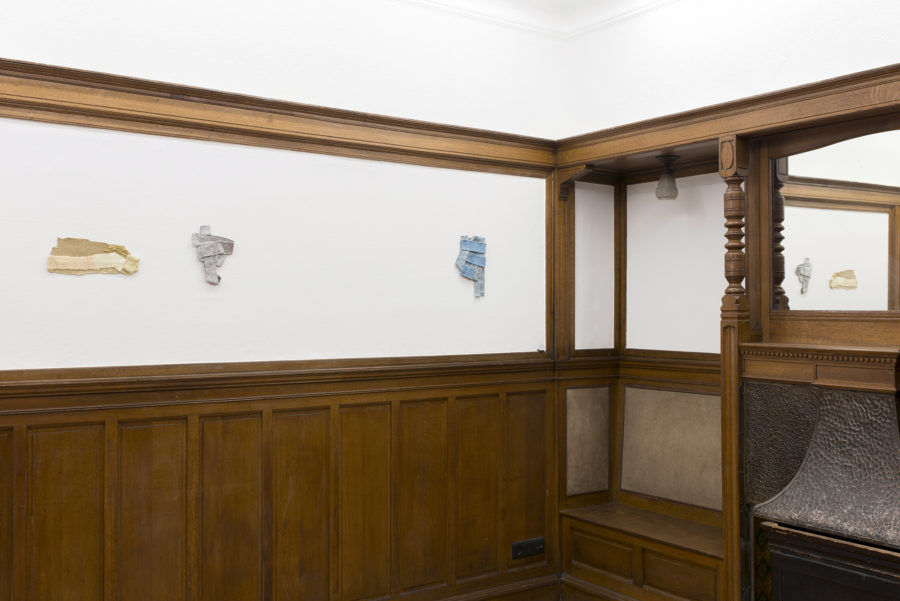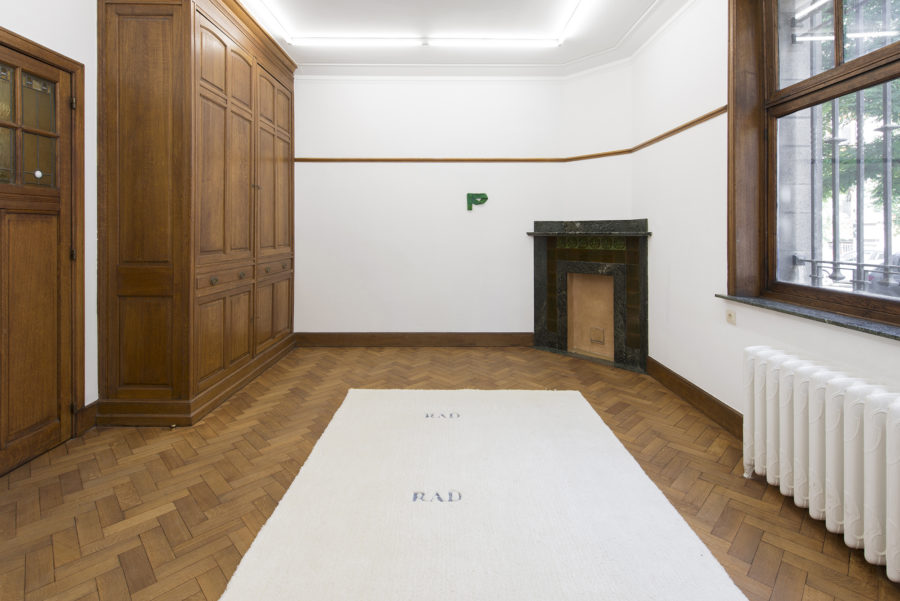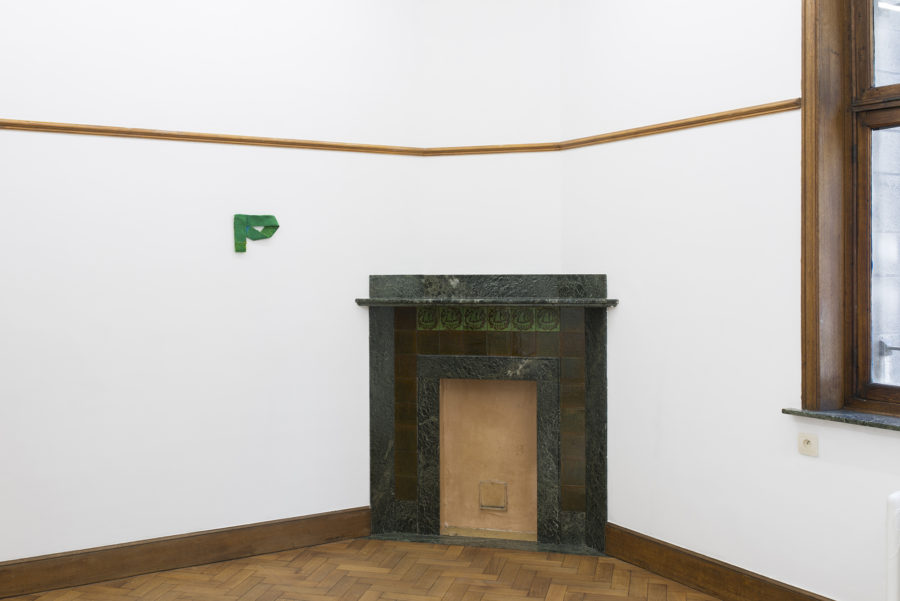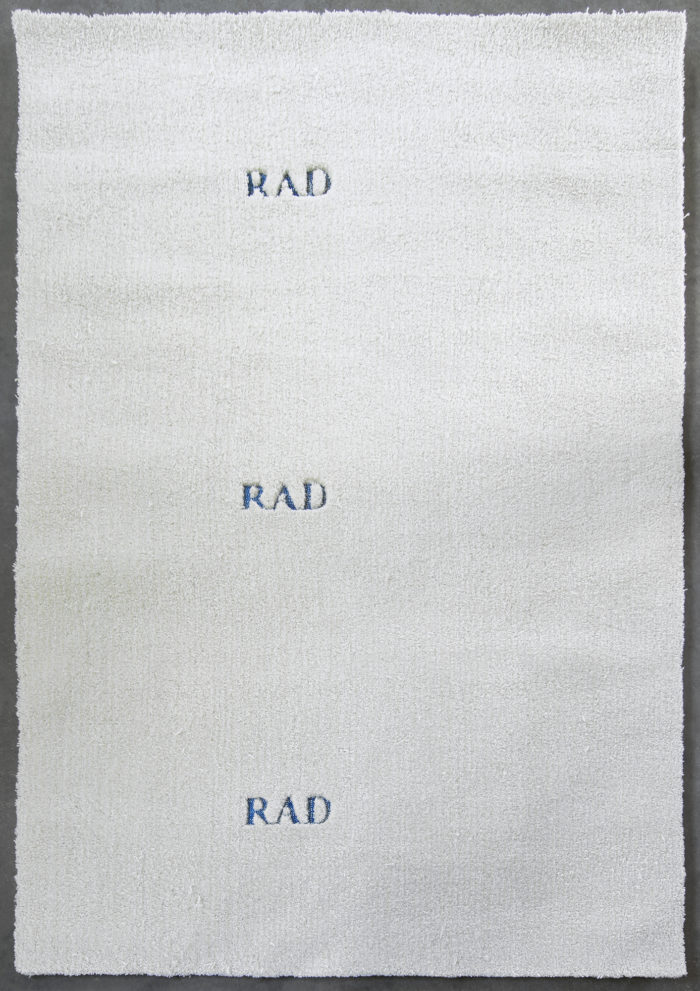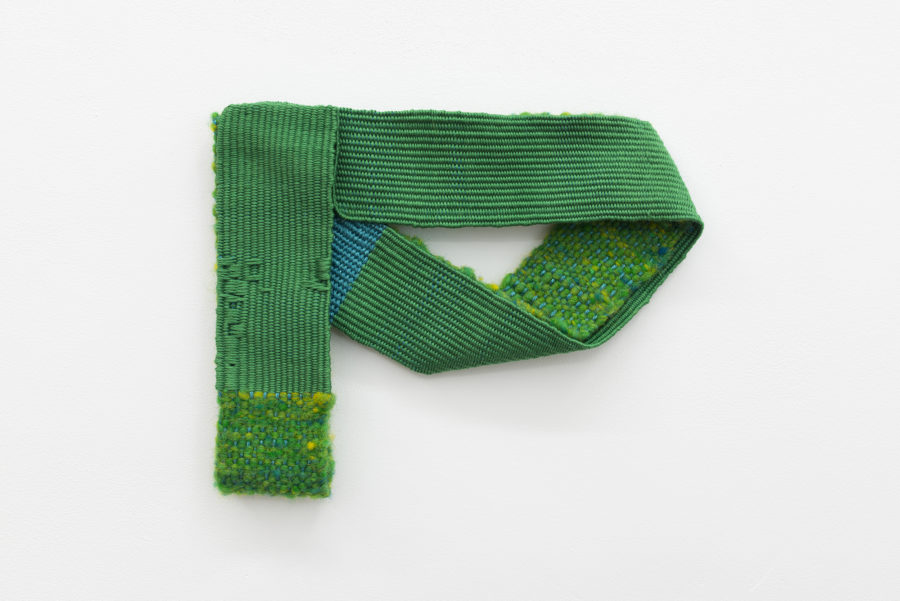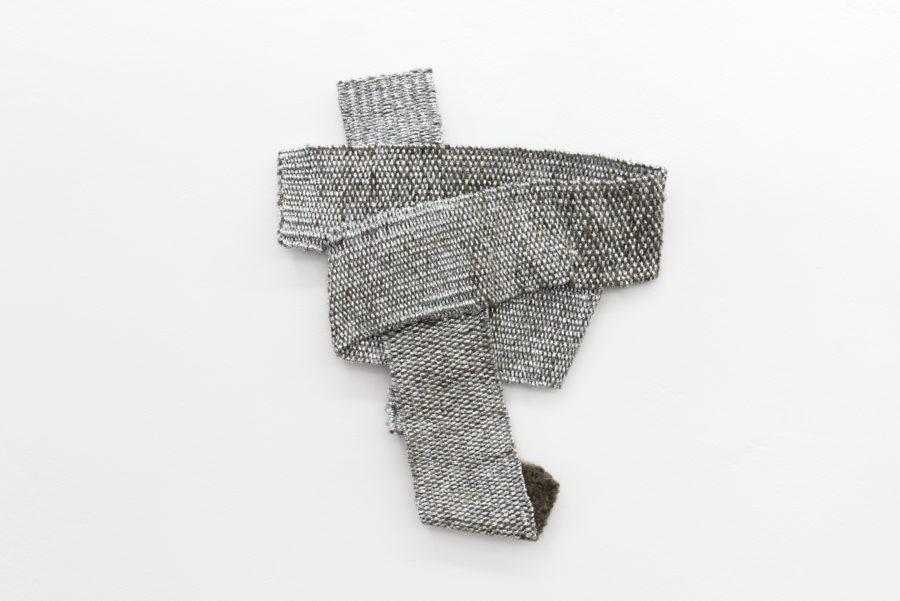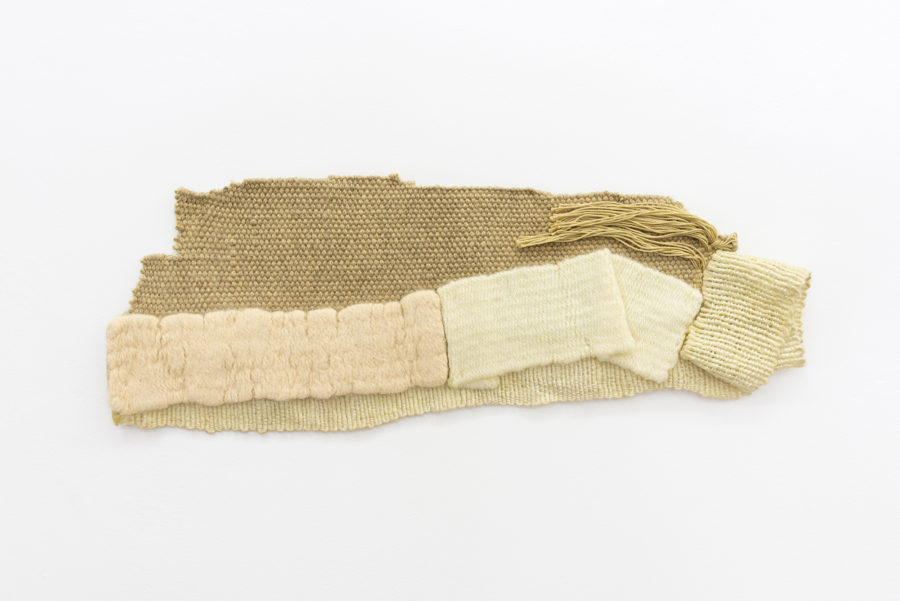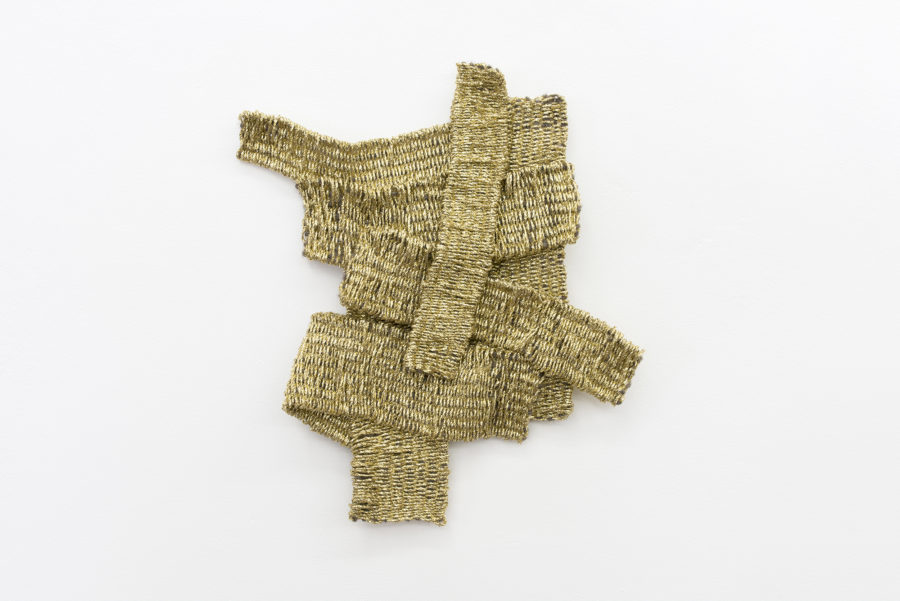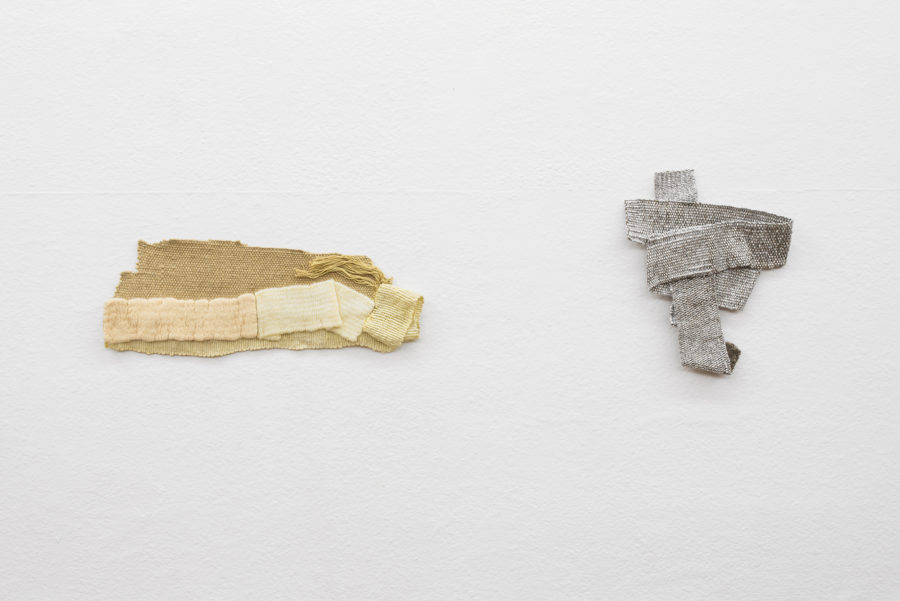Artist: Hana Miletić
Venue: La Maison de Rendez-Vous, Brussels
Exhibition Title: Retour au travail
Organized By: LambdaLambdaLambda
Date: September 5 – October 19, 2019
Photos: Isabelle Arthuis.
Images courtesy of the artist, LambdaLambdaLambda and La Maison de Rendez-Vous, Brussels.
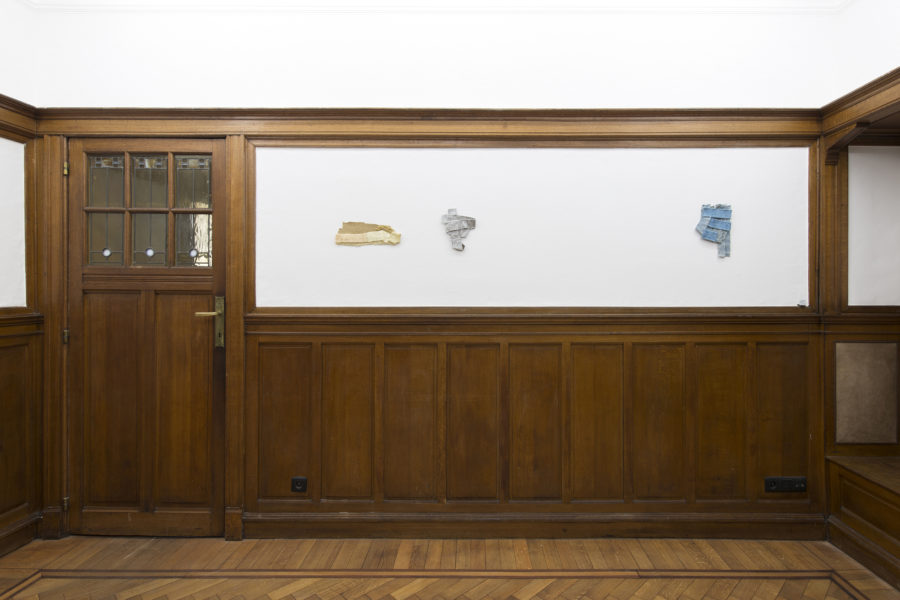
The central floor piece has the look and feel of a domestic carpet. Curiously, it carries a text—a three-letter combination that is repeated three times. RAD RAD RAD, it says, followed each time by enough white space to evoke a pause between the words. At first sight the information ends there, but the brain is always looking for patterns that create meaning. The rhythmic recurrence of the letters suggests that it may be a mantra or a code that unlocks a secret doorway or message when spoken out loud. To “read” a textile also means engaging our sense of touch, in order to unravel how it was made. The tufts of wool, varying in length and shade, are irregularly embedded in the carpet, marking the involvement of more than one hand. The choice of handicraft and collaborative labour ties the piece to a specific tradition; it represents a return to work before the age of industrial reproduction.
About five years ago, Hana Miletić shifted the focus of her practice from photography, performance and found poetry to weaving, thereby reconnecting with a craft from her childhood. She was born in the former Yugoslavia, during a period when its textile industry was strong and mostly state-owned. After its breakup in the 1990s, about which time the artist moved from Croatia to Belgium, many textile factories were dismantled and privatized in order to sell their real estate. Miletić returned to this moment of personal and social disruption and went looking for producers still in operation. She came across Regeneracija (“Regeneration”), a pile-carpet factory founded in the 1950s in Zabok, near Zagreb—one of the few that survived the war and its ruinous effects. Since the 1970s, the factory has often invited artists to collaborate with their craftswomen/men—a commitment they extended to Miletić in order to manufacture this unique carpet.
More than a decorative object, the piece presents itself as a visual, soft-surfaced poem. RAD means either “work” or “labour” in the artist’s native Croatian. It is the only legible part of the carpet’s backing material: a white industrially produced canvas carrying the name of the contracting company, TA-GRAD. Miletić spotted the branded tarpaulin while walking in Zagreb, where it covered the façade of a building undergoing construction. Finding in it a receptive, readymade base, she brought the protective fabric to the factory, where it was perforated with wool under high pressure, all the while ensuring that a significant part of the logo remained visible.This technique, known as hand-tufting, is commonly used for producing domestic carpets. By appropriating this found urban material, Miletić overturned its language, location and function, shifting the emphasis from commerce to care; vertical to horizontal; and public to private.
The wood-panelled rooms of the house are punctuated with a series of smaller handwoven textiles. Titled Materials, they appear more autonomous, combining seemingly abstract forms with tactile textures. Miletić modelled them on her own snapshots of broken architectural elements or car parts—mirrors, headlights and windows—creatively taped back together by their owners. Her particular attention to these temporary, improvised “quick fixes”, occurring in the margins of city life between Brussels and Zagreb, is an expression of her interest in the wider conditions of damage and neglect, and how we as individuals deal with them. By going beyond mere representation, and actually reproducing these protective interventions through the laborious process of handweaving and her inventive, pictorial use of materials, Miletić offers her own dedicated gestures of repair and reimagination.
Caroline Dumalin
